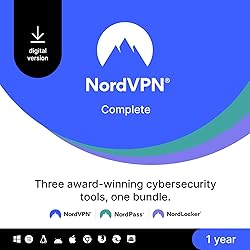VPN Router Setup: Secure Your Entire Network
VPN router setup is one of the most effective ways to protect all the devices in your home or office from cyber threats. By configuring a Virtual Private Network (VPN) directly on your router, you can extend encrypted internet access to every device that connects, ensuring comprehensive security, privacy, and convenience. Whether you are working remotely, streaming international content, or simply want peace of mind, understanding how to set up a VPN on your router is crucial for staying protected in today’s interconnected world.
—
Why Choose a VPN Router Setup?
A typical VPN app secures only the device it’s installed on—like your laptop, phone, or tablet. However, with a VPN router setup, every device connected to your Wi-Fi, including smart TVs, gaming consoles, and IoT appliances, automatically routes traffic through the encrypted VPN tunnel. This approach offers several advantages:
– Whole-Network Encryption: Every device and user that connects benefits from enhanced security and privacy.
– Device Compatibility: Protect devices that don’t natively support VPN apps, such as smart TVs or older gadgets.
– Consistent Protection: Avoid the hassle of setting up and maintaining VPN apps on each device individually.
– Access to Global Content: Unlock region-restricted sites and services on all your devices simultaneously.
—
Essential Steps for VPN Router Setup
Setting up a VPN on your router may initially seem technical, but the following steps can make the process straightforward, even for beginners:
1. Check Router Compatibility
Not all routers support VPN connections. Check your router’s manual or manufacturer’s website for compatibility with popular VPN protocols like OpenVPN or WireGuard. If your existing router doesn’t support VPN setup, consider purchasing a model with native VPN features.
2. Choose a Reliable VPN Service
Pick a VPN provider with robust security, a no-logs policy, and good customer support. Many leading VPN services offer detailed guides for router configuration.
3. Install Custom Firmware (If Needed)
Some routers require custom firmware—such as DD-WRT, OpenWRT, or Tomato—to enable VPN capability. Flashing firmware should be performed with care, as it can carry risks if done incorrectly.
4. Configure VPN Settings
Obtain your VPN login credentials and server configuration files from your provider. Log into your router’s admin panel and locate the VPN setup section. Enter the required details (such as server address, protocol, username, and password) based on instructions from your VPN provider.
5. Connect and Test
Once configured, connect your router to the VPN, then test the connection using tools like ipleak.net to ensure your IP address reflects the VPN server location. Check for DNS leaks and verify that all devices benefit from encrypted traffic.
—
VPN Router Setup: Best Practices for Cyber Security
Establishing a VPN router setup is just the first step toward a secure network. Consider these additional measures to optimize network security:
– Keep Firmware Updated: Routinely check for router and firmware updates to fortify defenses against vulnerabilities.
– Use Strong Wi-Fi Passwords: Prevent unauthorized access by using complex, unique passwords.
– Enable Network Encryption: Opt for WPA3 (or at least WPA2) encryption for your Wi-Fi network.
– Disable Remote Router Access: Limit admin panel access to your local network only.
– Monitor Connected Devices: Regularly review which devices are connected and disconnect any unknown ones.
—
Common Challenges and How to Solve Them
Configuring a VPN router can present a few unique challenges:
– Reduced Internet Speeds: VPN encryption can slow down your connection. Opt for a high-performance VPN provider and router, or connect only select devices through the VPN as needed.
– Device-specific Issues: Some websites and streaming platforms may block VPN traffic. Use split tunneling to allow select devices or services to bypass the VPN.
– Troubleshooting: If the VPN connection drops or fails, consult your provider’s support resources for configuration tweaks.
—
Conclusion
A VPN router setup is a powerful, efficient way to secure your entire network without the hassle of configuring VPNs on each individual device. With proper installation, routine maintenance, and adherence to best practices, you can dramatically increase your digital privacy and protect sensitive data from cyber threats. Whether you’re a home user seeking privacy or a business safeguarding sensitive information, investing in a VPN-enabled router is a crucial step toward comprehensive cyber security.


